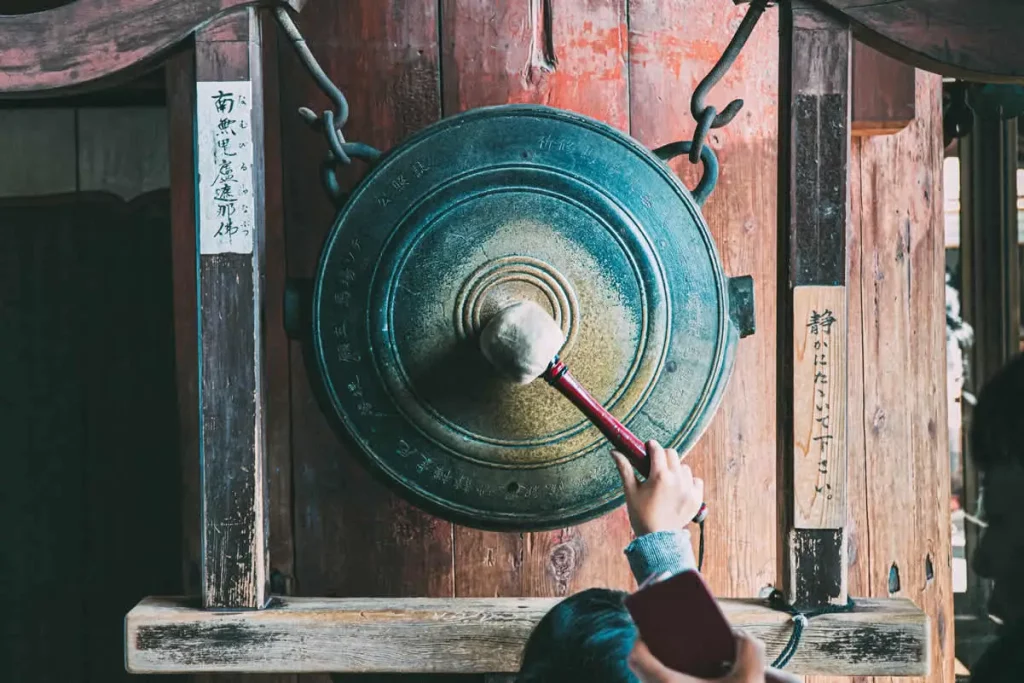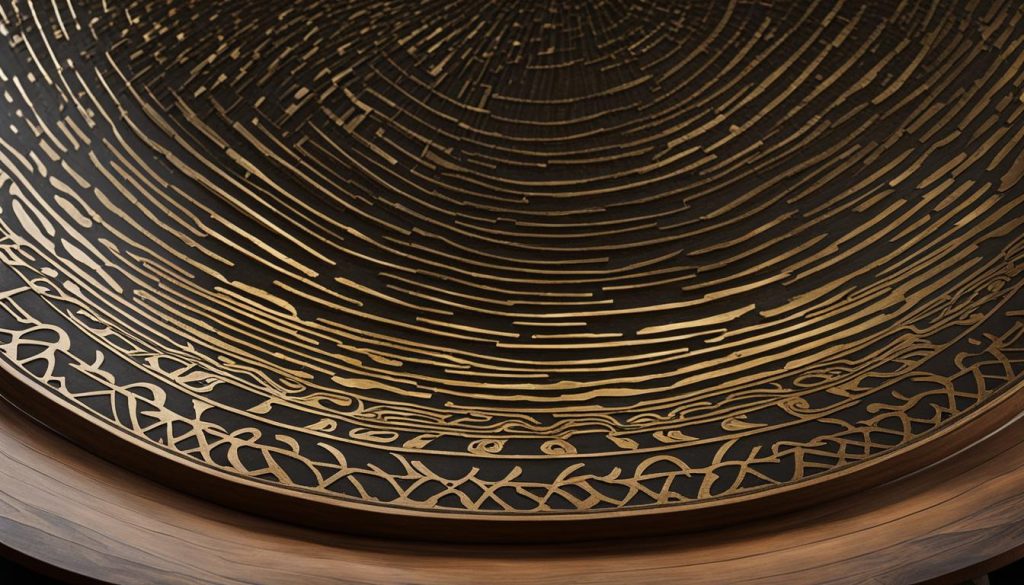In this exploration of ‘what is a Gong used for,’ we delve into the multifaceted uses of this captivating instrument, ranging from its traditional role in ceremonial events to its modern applications in sound therapy and meditation.
A gong is a percussion instrument that originated in East Asia and Southeast Asia. It is a flat, circular metal disc that is struck with a mallet to produce a sound.
They have a rich history that dates back thousands of years and have been used for various purposes.
They are also used in music, rituals, ceremonies, and even in holistic practices such as sound healing and meditation. Gongs come in different sizes and designs, and the sound they produce can vary depending on how they are struck.
Playing techniques and styles of gongs vary across different cultures, adding to the diversity of their sound. The mesmerizing and captivating sound of gongs creates a unique and immersive experience for listeners.

Content
The History and Origins of Gongs
The history of gongs can be traced back to ancient civilizations in Asia, particularly China and Indonesia.
The earliest depictions of gongs can be found on the surface of the Ngọc Lũ I bronze drum from the Dong Son culture of northern Vietnam, dating back to the 3rd to 2nd century BC.
Chinese records from the 6th century AD mention gongs as a foreign instrument that came from a country between Tibet and Burma. Scientific and archaeological research has revealed that Burma, China, Java, and Annam were the main gong manufacturing centers in the ancient world.
Gongs found their way into the Western world in the 18th century and became part of the percussion section in Western-style symphony orchestras.
| Gong Manufacturing Centers in Ancient Times | Location |
|---|---|
| Burma | Southeast Asia |
| China | East Asia |
| Java | Indonesia |
| Annam | Vietnam |
Types and Construction of Gongs
Gongs, fascinating percussion instruments, come in various types and construction styles. Let’s explore the different classifications and materials used in creating these captivating musical instruments.
Suspended Gongs
Suspended gongs are flat, circular discs of metal that are vertically suspended and played by striking with a mallet.
They produce deep and resonant tones that resonate through the air, captivating listeners with their rich vibrational qualities.
Bossed Gongs
Bossed gongs, on the other hand, have a distinctive raised center boss or nipple. These gongs are often suspended horizontally and played by striking the boss or the surrounding areas.
The bossed design creates unique tonal variations and adds a visual element to the overall aesthetic appeal of the gong.
Bowl Gongs
Bowl gongs, as the name suggests, are shaped like bowls and rest on cushions. They are played by striking the rim or the surface of the bowl, producing a bright and resonant sound.
Bowl gongs are known for their versatility and are commonly used in meditation practices and sound healing ceremonies.
Gongs are primarily made from bronze or brass, which contribute to their distinct tonal characteristics. However, other alloys can also be used to create gongs with specific qualities.
The choice of material affects the overall sound and resonance of the gong, allowing for a wide range of options when selecting the perfect gong for your musical or therapeutic needs.
The vibrations produced by gongs are not only auditory but can also be felt throughout the body. This adds to the immersive experience of playing or listening to a gong, creating a deeper connection between the instrument and the listener.
The resonant vibrations have been known to induce relaxation, reduce stress, and promote a sense of harmony and well-being.
Now that we’ve explored the types and construction of gongs, let’s delve into their fascinating history and cultural significance in the next section.

What Is Gong Used For in Music and Healing
Gongs have diverse uses in both music and healing practices. In music, gongs are used in various genres and styles, adding unique sounds and textures to compositions. They are commonly used in symphony orchestras, operas, and traditional ensembles.
In healing practices, gongs are believed to have therapeutic effects. The vibrations produced by gongs are said to promote relaxation, reduce stress, and balance energy in the body.
Gong therapy and gong sound healing sessions are used to induce deep relaxation, mindfulness, and meditation. The deep and resonant sound of the gong has a calming and soothing effect on the mind and body.
The powerful vibrations created by the gong can penetrate deeply into one’s being, promoting a sense of harmony and balance.
The rhythmic and melodic tones created by the gong can transport individuals to a state of deep relaxation and introspection, allowing for deep emotional and physical healing.
Gong sound healing sessions often involve the use of different gongs, each producing a unique range of frequencies and resonance. The session typically begins with the gentle striking of the gong, gradually building up to create a symphony of sound that envelops the space and immerses the participants.
The combination of the resonant tones, vibrations, and subtle shifts in frequencies helps to release tension, clear energy blockages, and promote a state of deep relaxation and inner peace.
The Benefits of Gong Therapy and Meditation
- Promotes deep relaxation and stress relief
- Enhances mindfulness and meditation practices
- Reduces anxiety and promotes emotional well-being
- Helps to balance energy in the body
- Aids in pain management and physical healing
Whether used in musical performances, meditation sessions, or sound healing therapies, gongs have proven to be powerful tools for promoting well-being and healing.
The resonant and enveloping sound of the gong creates a transformative experience, allowing individuals to connect with their inner selves and tap into their innate healing abilities.
Conclusion
To wrap it up what is a gong used for, we have to look way back in history. As I mentioned, they are used in music, rituals, ceremonies, and healing practices, contributing to the rich cultural fabric of different societies.
With their diverse sizes, designs, and materials, gongs produce a wide range of unique sounds that captivate and immerse listeners in their resonant tones.
Whether utilized in musical performances, meditation sessions, or sound healing therapies, gongs offer numerous benefits. They have been proven to promote relaxation, reduce stress, and induce a meditative state.
Exploring the world of gongs enables you to gain a deeper understanding and appreciation of their cultural significance and the therapeutic properties they possess.
